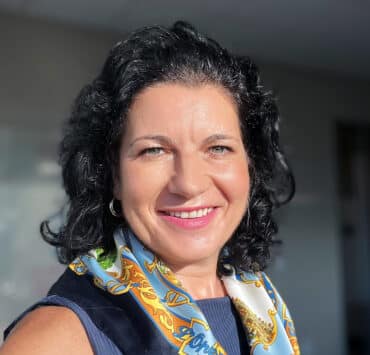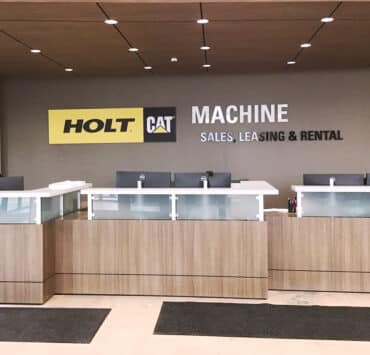|
Getting your Trinity Audio player ready...
|
One of the lessons of the pandemic is how much Americans enjoy restaurant culture. We struggled through just enough wintertime outdoor dining to keep many establishments in business. It’s about the food, to be sure, but the whole experience of dining out is bigger than that. It’s the place, the operations, the aesthetics, the staff, and the clientele. It all adds up to why people pay a sizable multiple of what the food would cost to make the same meal at home.
For most diners, the restaurants they go to are an intuitive choice. They just like being there. They don’t think about what it takes to create the physical place and space the way Brad Mignone does. He is a developer and general contractor with lots of restaurant construction experience, most recently as vice president of development and construction for Gordon Ramsay North America (GRNA) restaurants. Mignone plans to leave GRNA in summer 2024 to establish his own general contracting and consulting business.
Mignone’s title doesn’t begin to describe everything that goes into turning bricks and mortar (or an empty lot) into a dining destination. Physical construction is just one element of it. Other factors include identifying appropriate locations, working on the contracts (purchase or lease terms), zoning issues, health department licensing, designing for the complex logistics of restaurant operations, and making sure the restaurant is constructable within the building.
“My career didn’t really come about by plan. I didn’t know where each job would lead. But I never went looking for a job either. The jobs found me.”
Brad Mignone
Something else: Not all restaurants are located in purpose-built new structures. Preexisting, vintage, and even historic buildings are very often popular locations for eateries. But they present special challenges for building out a new restaurant concept.
“Buildings in historic structures are sometimes really hard,” says Mignone, who nonetheless has figured out ways to build them. Those kinds of buildings are often situated in popular urban retail districts that draw pedestrian traffic, where patrons are looking for an interesting place to be in as much as where to eat. He mentions how in addition to dealing with the mechanical systems and layout configurations of such locations, there are design advisory boards who determine what can and cannot be done with those buildings’ exteriors. “It’s pretty much about preservation at all costs,” he acknowledges.

While Gordon Ramsay and similar organizations have specific real estate professionals who scout new sites, Mignone is integral to the process once a location preference is identified. “I get involved to figure out if the restaurant would be physically possible,” he says. “The biggest concern is, Does it meet MEP (mechanical, electrical, and plumbing) criteria?” His counsel includes guiding the lease language for rented properties to cover physical requirements and related costs.
From there, his work shifts to hiring the architects, consultants, general contractors, and owner/vendors for each project. The location and type of building matters in this process. “I try to pick contractors by geographic market strengths,” he says. “For example, bringing a contractor with little union experience into a city like Manhattan can present a lot of unnecessary struggles.”
He also engages with the organization’s legal department in applying for the documents and inspections for building, liquor, and health permits; business licenses; and everything else that goes into creating a space that’s lawful to operate. The rules and efficiencies of that process vary by city.
Back to the pandemic and its aftermath: Establishing new restaurants is challenging enough. Next, add in supply chain issues. “Time is money,” says Mignone, who was working as a project executive in another company through the peak of the pandemic. “We worked around the shortages any way we could. There are still some supply chain issues, and we have to design around them. For example, large electric panels are harder to get due to chip shortages, so we’d use more, smaller panels when necessary.”
In theory, it’s possible to learn the vertical integration of all these factors in a textbook, but Mignone’s path was more hands-on. He began his career as a carpenter. Later, he worked as a journeyman mechanical plumber, then advanced into project superintendent and project manager jobs with construction firms before entering the world of restaurant development and construction. “My career didn’t really come about by plan,” he says. “I didn’t know where each job would lead. But I never went looking for a job either. The jobs found me.”
“I try to pick contractors by geographic market strengths. For example, bringing a contractor with little union experience into a city like Manhattan can present a lot of unnecessary struggles.”
Brad Mignone
Restaurants tap into some of the most complex design and construction capabilities. “You pack so much into small spaces,” Mignone says, describing power and water conduits and the need for pollution control in air and water effluence. But his extensive experience in other commercial and residential construction makes him a well-rounded builder.
For his new general contracting and construction development consulting firm, he plans to work across a broad range of building types. He’ll create the kinds of places where people like to be, even if they aren’t thinking about what it takes to build them. And with his résumé and work ethic, there’s no doubt he’ll be successful.
Demark Lighting LLC. has had the pleasure of working with Gordon Ramsay North America and Brad Mignone over the past few years. Working with Brad has always been a great experience. His knowledge in the industry is second to none, and together we have completed successful locations across the country. Demark Lighting is honored to work with Brad and Gordon Ramsay North America. Congratulations on your recognition, Brad.


